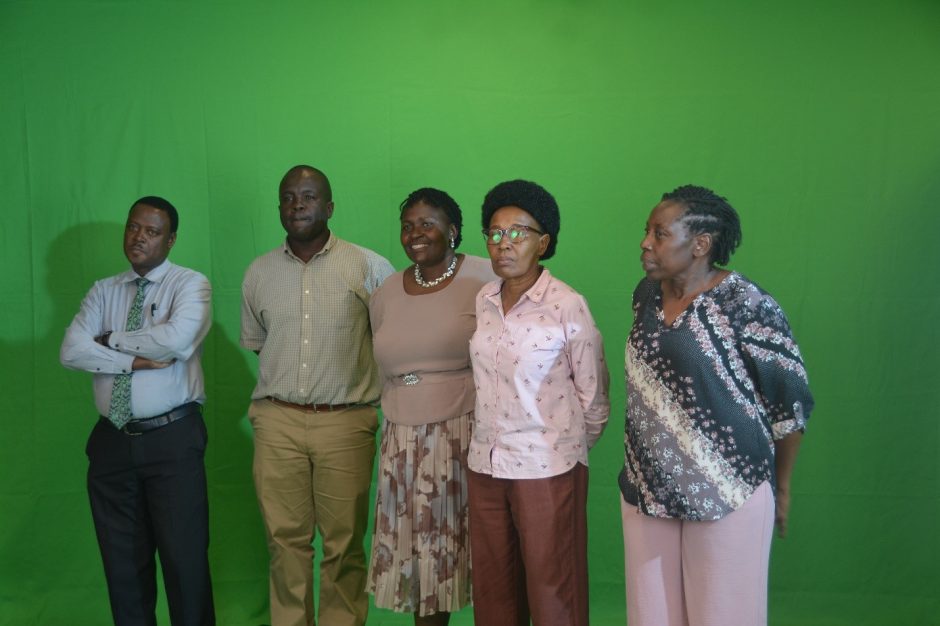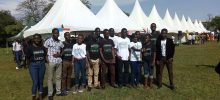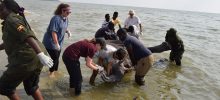CoVAB Teaching Staff Explore Educational Video Recording Services at Frank Kalimuzo Teaching Facility
On Tuesday, 5th November 2025, teaching staff from the College of Veterinary Medicine, Animal Resources and Biosecurity (CoVAB), led by Dr. Peninah Nsamba, one of the College’s E-Learning contact persons, visited the Frank Kalimuzo Teaching Facility to explore the Educational Video Recording service.
During the session, staff were introduced to the capabilities of the studio and participated in a hands-on demonstration, gaining insight into how multimedia tools can enhance the delivery of academic content.

Dr. Richard Kajumbula, one of the lead trainers from IODeL facilitated the tour.
Dr. Richard Kajumbula, one of the lead trainers from the Institute of Open, Distance and eLearning (IODeL), emphasized the practical purpose of the visit. “This is a studio tour, meant to help people see how the equipment works.”. he said noting that hands-on exposure to the recording setup is essential for educators to understand how to integrate multimedia tools into their teaching effectively.
Dr. Claire M. Mugasa, the Dean of the School of Biomedical Laboratory Sciences (SBLS) at CoVAB, expressed her appreciation for the studio tour, describing it as “an interesting and timely initiative.” She shared that she had previously used similar video recording setups and recognized their value in enhancing teaching delivery. “Thank you for giving us this opportunity,” she said.
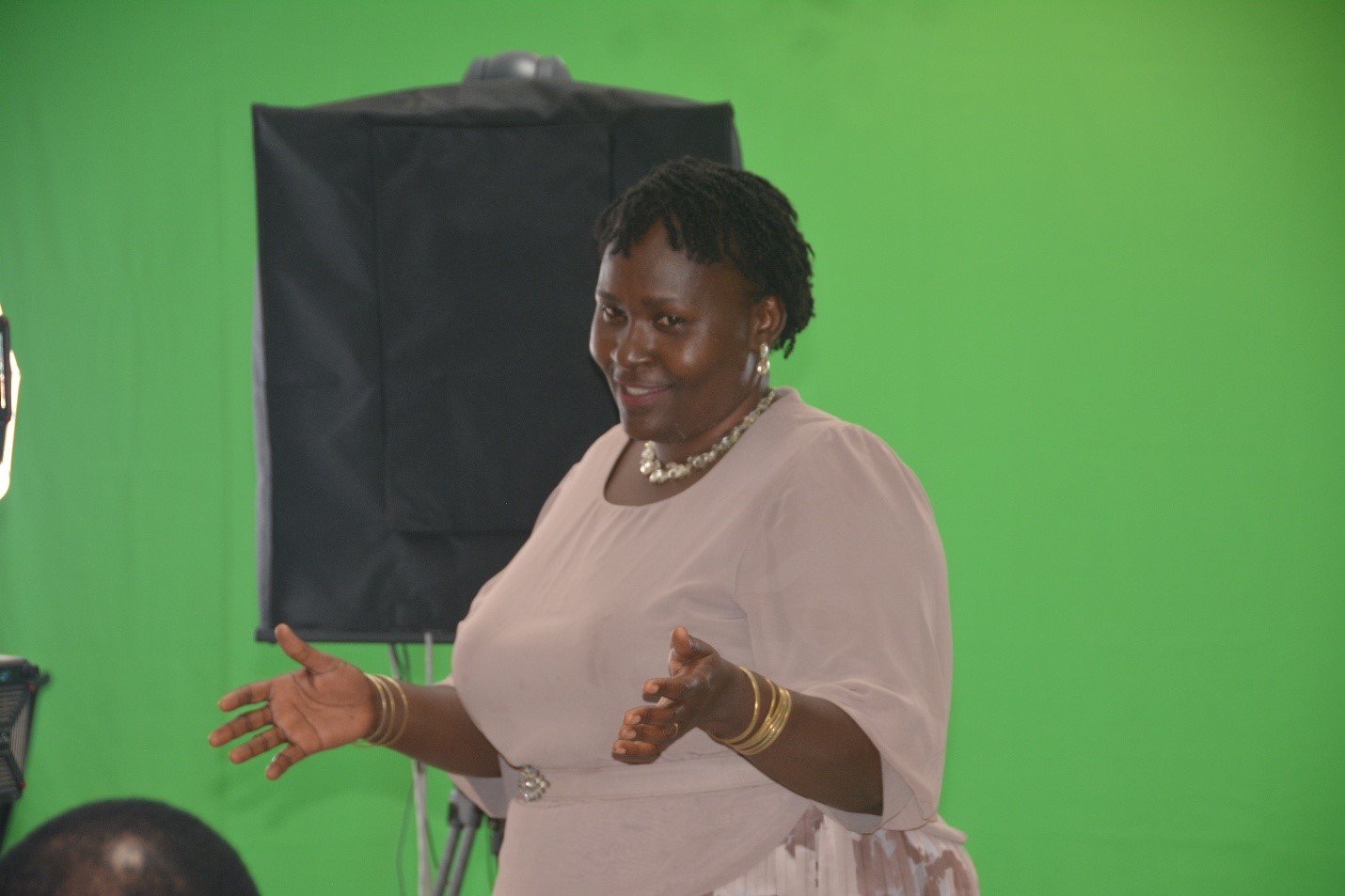
Dr. Mugasa emphasized the practical nature of teaching at CoVAB, particularly in areas like microscopy and laboratory demonstrations. “Most of us teach through the microscope,” she noted. “We needed to understand how such practical sessions can be effectively captured on video.”
During the visit, Dr. Claire M. Mugasa together with the other staff recorded a segment demonstrating a practical setup, underscoring the importance of creating specialized videos tailored to the unique demands of biomedical instruction. She emphasized that many CoVAB educators teach through hands-on methods, such as microscopy, and need tools that can effectively capture and convey these practical experiences.
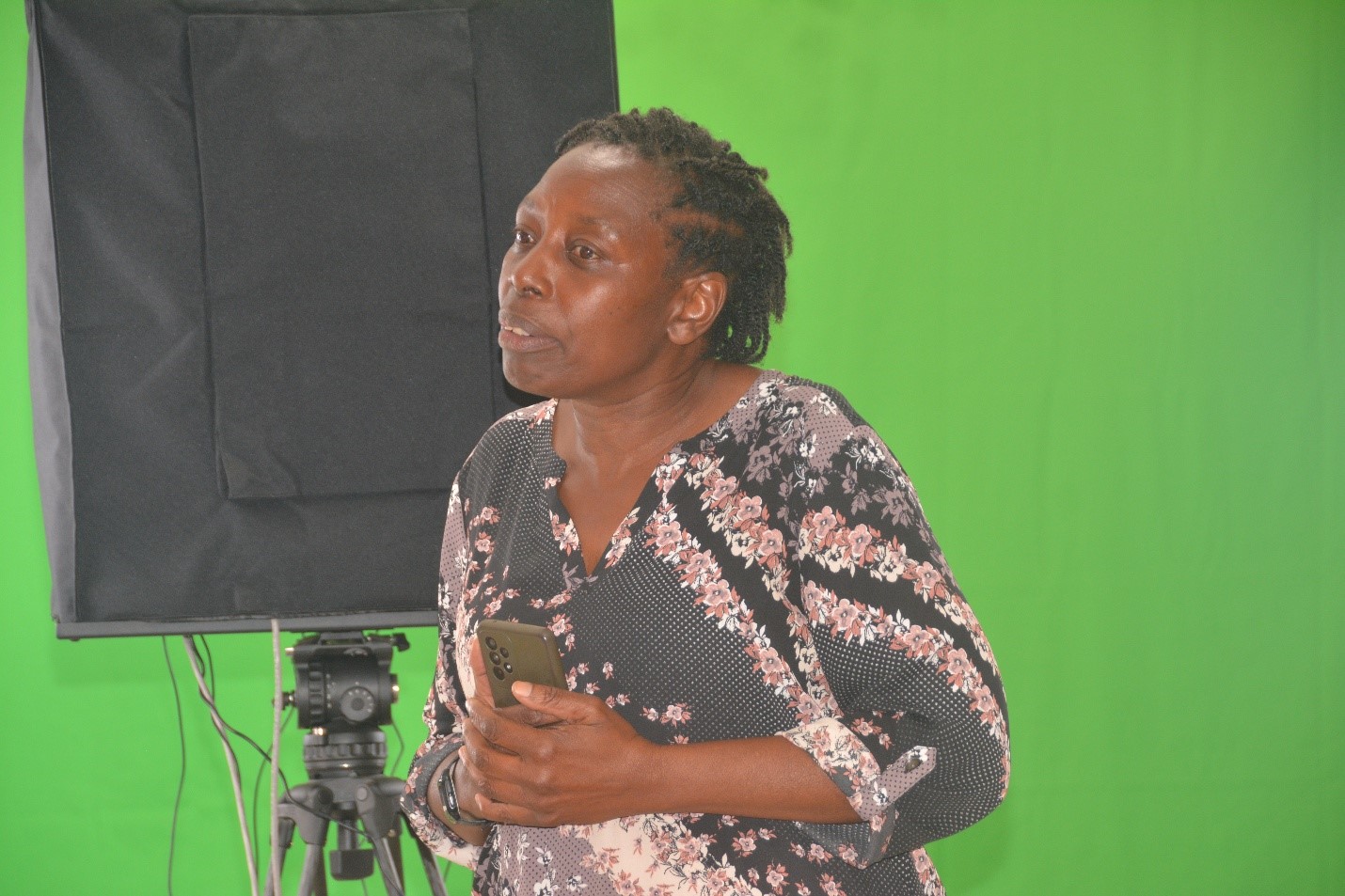
Dr. Peninah Nsamba recorded a demo video to showcase the studio’s teaching capabilities
Dr. Mugasa also highlighted the value of informal sharing platforms like WhatsApp groups, where educators frequently exchange impactful recordings and messages drawn from real-world fieldwork. She posed a thoughtful question about whether such grassroots content, rich with local context and practical realities could be incorporated into formal educational videos to enhance relevance and relatability.

Dr. Maureen Mayanja emphasized the importance of recording own videos for teaching purposes
During the studio tour, CoVAB staff raised several key issues surrounding the integration of video recording into teaching. While acknowledging the abundance of online content, participants emphasized the importance of creating locally relevant videos that reflect familiar accents, voices, and teaching styles,making learning more relatable and effective. They noted that personalized videos allow for better structuring of content and can be archived by the university for future use.
Questions also emerged about the logistics of the recording process, including how to schedule multiple sessions without conflict. Concerns were raised about copyright, with staff seeking clarity on the use of free online materials versus creating original content. Additionally, participants inquired about the university’s preparedness for AI-assisted video editing and whether systems are in place to detect AI-generated content, highlighting the need for clear guidelines and technical support as multimedia teaching tools become more widely adopted.
He thanked the organizers for providing the opportunity, emphasizing that access to such technology empowers educators to create tailored content that reflects their teaching style and the local context. “It’s not just about recording lectures,” he added. “It’s about making learning more accessible, relatable, and engaging for our students.”
Story by Harriet Musinguzi


